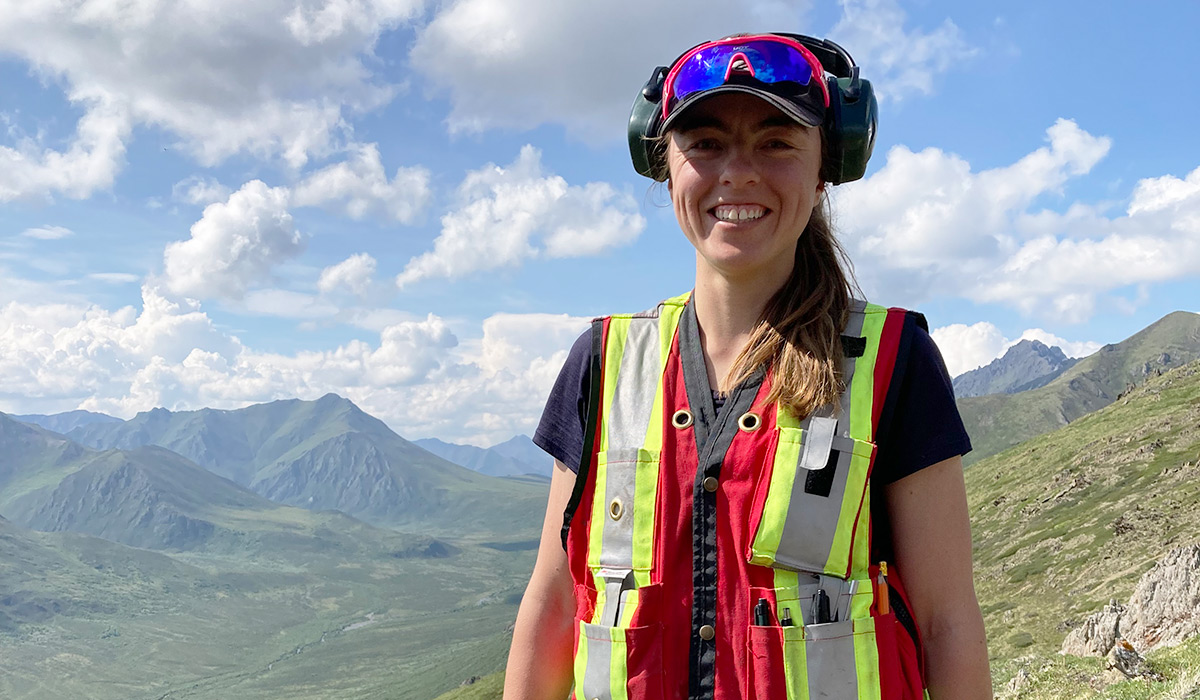To help Canada and other countries mitigate and adapt to this profound challenge, a network of scientists coordinated by Carleton University—in collaboration with Indigenous communities, industry partners and government agencies—is striving to address a set of interrelated questions: where and when is permafrost thaw occurring and what are the hazards arising from this?

Established in 2019 with a $5.5 million grant from the Natural Sciences and Engineering Research Council, NSERC PermafrostNet brings together researchers from a dozen universities, including scientific director Stephan Gruber, the Canada Research Chair in Climate Change Impacts/Adaptation in Northern Canada at Carleton.
“Unexpected and often bad things happen when permafrost thaws,” says Gruber.
“When ground that was hard for centuries becomes soft, or like a slurry, the buildings, roads and runways that are on it can be damaged or require a lot of costly maintenance and repairs.
“Permafrost thaw can also change hydrology, impacting everything from vegetation and wildlife to infrastructure. If a lake drains, it can reduce access to traditional food such as fish or berries.”
The warming experienced in Canada’s north over the past couple decades has already led to significant permafrost thaw. Roads and structures have been damaged or threatened by thaw slumps, Gruber says. As warming accelerates and continues, “we need to prepare for changes that are outside what our species has ever lived through,” he says. “It’s a completely new story now.”
Bridging the Gap in Permafrost Research
Gruber’s personal research focus—which involves field work around ground ice loss and spatial variation—mirrors that of NSERC PermafrostNet as a whole. He wants to bridge the gap between the location-specific observations of geoscience and the broader, big-picture modelling of climate science to better understand specific concerns on a wide scale.
“It’s similar to driving a car,” he explains by way of analogy. “If you never look at your dashboard, you won’t see that your engine light is on. But if you don’t also look far ahead, you might crash into something. We need to use multiple perspectives.”
Ultimately, this research will lead to tools that inform forward-looking permafrost decision-making. This is a pressing issue in the Canadian Arctic, where there are already major housing shortages, where many communities are fly-in or have limited road access, and where permafrost thaw will impact just about everything, including mines and the long-term stability of contaminated sites.
“A lot of the things that inform our actions are empirical,” says Gruber, “but the best practices we had for building on permafrost, for example, may no longer be adequate in a future that differs from what we know today. We need to prepare for persistent changes. We also need to help build capacity in the north, because this is one of the keys to efficient adaption.”
To Gruber, collaborative solutions like the ones developed by NSERC PermafrostNet represent a shift toward a new generation of researchers who approach problems in a holistic way.

Emilie Stewart-Jones, a Carleton University master’s student supervised by Gruber, moved to Whitehorse to be closer to the places where she conducts research.
Stewart-Jones is focused on steep rock faces in the mountain permafrost environments of western Canada. She hikes into the alpine, measures slope angle and aspect, and installs temperature sensors in rock faces as part of her effort to better understand rock fall events in a changing climate.
“I’ve been in the mountains and observed their rock faces through all seasons,” she says. “The knowledge gained from this is subtle but incredibly valuable, which is especially true when you’re working on a modelling-based project. It’s easy to make incorrect assumptions when you don’t know the environment.
“I’ve also worked with and within governments, allowing me to understand their inner workings and priorities,” continues Stewart-Jones.
“It makes sense to collaborate with local people and governments. They can help direct your research to topics and issues that are important, and they provide valuable skills and knowledge. Science doesn’t have to be exclusive—it holds more power when it’s shared.”